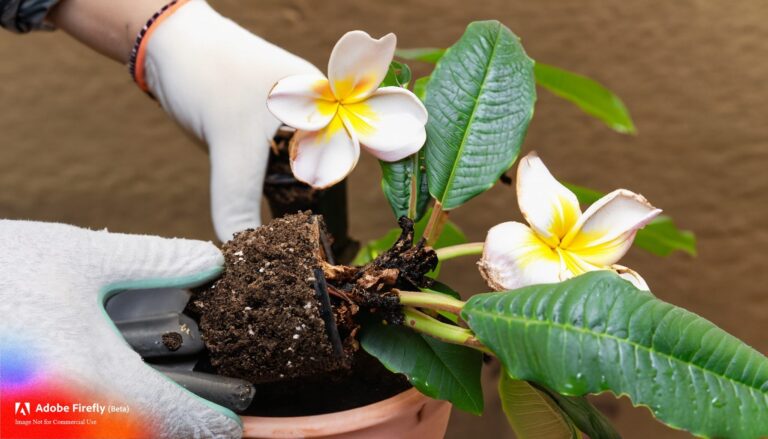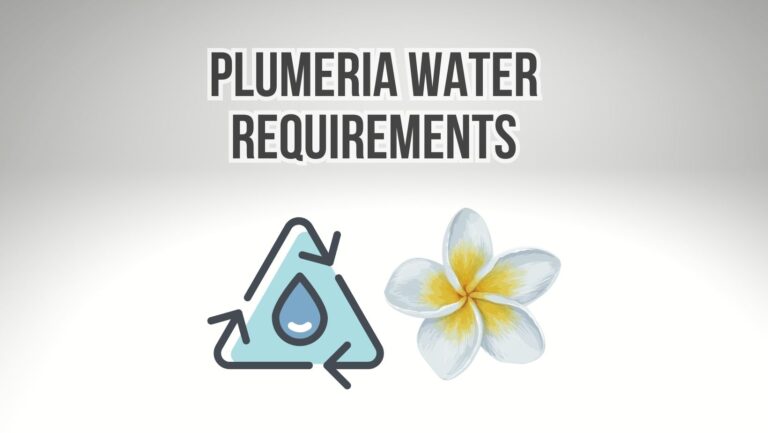
Plumerias are known for their beautiful and fragrant flowers, and the Yellow Gina variety is no exception. If you’re looking to add a touch of elegance and color to your garden, the Yellow Gina Plumeria is an excellent choice. In this comprehensive guide, we will explore everything you need to know about growing and caring for Yellow Gina Plumeria plants. From understanding its characteristics to learning about propagation techniques, we’ve got you covered. Let’s dive in and discover the world of Yellow Gina Plumeria!
Introduction
Plumeria, also known as frangipani, is a tropical plant native to Central America, Mexico, and the Caribbean. It is highly regarded for its vibrant and aromatic flowers, which come in various colors and sizes. Yellow Gina Plumeria, specifically, is a cultivar known for its striking yellow blossoms and delightful fragrance.
2. What is Yellow Gina Plumeria?
Yellow Gina Plumeria is a variety of Plumeria with distinct yellow flowers. Its blooms are large, often measuring 3-4 inches in diameter, and they possess a sweet fragrance that can fill your garden with a delightful scent. This variety is prized by gardeners and flower enthusiasts for its unique color and beauty.
Benefits of Growing Yellow Gina Plumeria
Growing Yellow Gina Plumeria offers a range of benefits. Firstly, its vibrant yellow flowers add a pop of color and elegance to any garden or landscape. The fragrant aroma of the blossoms further enhances the sensory experience. Additionally, Plumerias are generally low-maintenance plants, making them suitable for both beginner and experienced gardeners. By cultivating Yellow Gina Plumeria, you can enjoy the rewards of a visually appealing garden without investing excessive time and effort.
Choosing the Right Location
To ensure the optimal growth and development of Yellow Gina Plumeria, it’s crucial to choose the right location for planting. These plants thrive in warm and tropical climates, ideally in USDA hardiness zones 10 to 12. They require full sunlight for at least six hours a day, so select a spot in your garden that receives ample direct sunlight.
Soil Requirements
Yellow Gina Plumeria prefers well-draining soil with a slightly acidic to neutral pH. A sandy loam soil mixture is ideal for promoting proper drainage. Before planting, amend the soil with organic matter to improve its fertility and moisture-retention capabilities. This will provide a favorable environment for the roots to establish and grow.
Planting Yellow Gina Plumeria
When planting Yellow Gina Plumeria, dig a hole that is wide and deep enough to accommodate the root ball of the plant. Gently place the plant in the hole, ensuring that it is level with the ground. Backfill the hole with soil, lightly firming it around the roots. Water the plant thoroughly after planting to help settle the soil and provide initial hydration.
Watering and Fertilizing
Yellow Gina Plumeria plants require regular watering to establish themselves and promote healthy growth. Water the plants deeply, allowing the soil to dry out slightly between waterings. However, avoid overwatering, as Plumerias are susceptible to root rot.
In terms of fertilization, use a balanced, slow-release fertilizer formulated specifically for Plumerias. Apply the fertilizer during the growing season, following the instructions on the package. This will provide the necessary nutrients for robust growth and abundant flowering.
Pruning and Maintenance
Pruning is an essential aspect of maintaining Yellow Gina Plumeria plants. It helps shape the plant, removes dead or diseased branches, and stimulates new growth. Prune the plant during the dormant season, preferably in late winter or early spring, before new growth appears. Use clean and sharp pruning shears to make clean cuts and prevent the spread of diseases.
Regular maintenance tasks for Yellow Gina Plumeria include removing spent flowers, inspecting for pests or diseases, and removing any weeds or debris from around the plant. These practices will keep the plant healthy and encourage continuous blooming.
Dealing with Pests and Diseases
While Yellow Gina Plumeria is generally resilient, it can still face certain pests and diseases. Common pests include aphids, mealybugs, and spider mites. To control these pests, use organic insecticidal soap or neem oil. Regularly inspect the plant for any signs of infestation and take immediate action to prevent further damage.
Regarding diseases, Plumerias are susceptible to fungal infections such as black tip fungus and rust. To minimize the risk, avoid overhead watering and ensure proper air circulation around the plant. If necessary, use a fungicide recommended for Plumerias, following the instructions provided.
Propagation of Yellow Gina Plumeria
Yellow Gina Plumeria can be propagated through various methods, including cuttings, grafting, and air layering. The most common and accessible method for home gardeners is through stem cuttings. Select a healthy stem and cut it at an angle, ensuring it is at least 12-18 inches long. Remove the lower leaves, dip the cut end in rooting hormone, and plant it in a well-draining potting mix. Keep the cutting warm and moist until roots develop, usually within a few weeks.
Yellow Gina Plumeria Varieties
Apart from the Yellow Gina variety, there are other captivating Plumeria varieties available to diversify your garden. Some popular options include:
- Pink Perfection: Features soft pink flowers with a yellow center.
- Bali Whirl: Displays white petals with a vibrant pink or red center.
- Singapore White: Showcases pure white flowers with a sweet fragrance.
- Aztec Gold: Exhibits golden-yellow flowers with a rich fragrance.
Frequently Asked Questions
Q: How often should I water Yellow Gina Plumeria? A: Water your Yellow Gina Plumeria deeply once the soil starts to dry out, typically every 7-10 days.
Q: Can I grow Yellow Gina Plumeria indoors? A: While Plumerias prefer outdoor conditions, they can be grown indoors if provided with sufficient light and warmth.
Q: Are Plumerias toxic to pets? A: Yes, Plumerias are toxic to cats and dogs. Keep them out of reach of curious pets.
Q: How long does it take for Yellow Gina Plumeria to bloom? A: Yellow Gina Plumeria typically blooms within 2-3 years after planting, depending on the growing conditions.
Q: Can I grow Yellow Gina Plumeria from seeds? A: Yes, it is possible to grow Yellow Gina Plumeria from seeds, although it may take longer to see blooms compared to other propagation methods.
Conclusion
In conclusion, Yellow Gina Plumeria is a captivating and fragrant addition to any garden or landscape. With its vibrant yellow flowers and low-maintenance nature, it brings beauty and elegance without demanding excessive care. By following the guidelines outlined in this guide, you can successfully grow and enjoy the enchanting blooms of Yellow Gina Plumeria in your own outdoor oasis.






